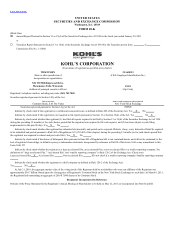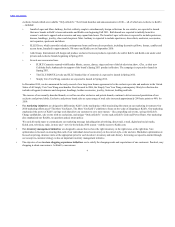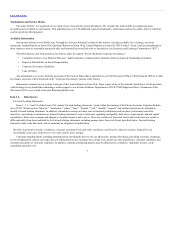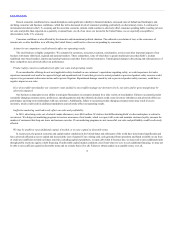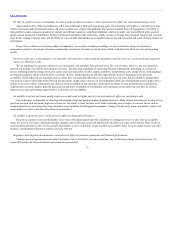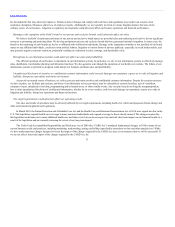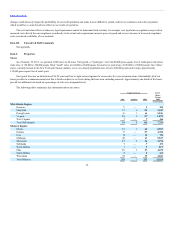Kohl's 2010 Annual Report Download - page 6
Download and view the complete annual report
Please find page 6 of the 2010 Kohl's annual report below. You can navigate through the pages in the report by either clicking on the pages listed below, or by using the keyword search tool below to find specific information within the annual report.
Table of Contents
We believe the transferability of the Kohl’s retailing strategy, our experience in acquiring and converting pre-existing stores and in building new stores,
combined with our substantial investment in management information systems, centralized distribution and headquarters functions provide a solid foundation
for further expansion.
We receive substantially all of our merchandise at nine retail distribution centers. A small amount of our merchandise is delivered directly to the stores
by vendors or their distributors. The retail distribution centers, which are strategically located through the United Sates, ship merchandise to each store by
contract carrier several times a week. We also operate fulfillment centers in Monroe, Ohio and San Bernardino, California that service our E-Commerce
business.
See Item 2, “Properties,” for additional information about our distribution centers.
As of January 29, 2011, we employed approximately 136,000 associates, including approximately 29,000 full-time and 107,000 part-time associates.
The number of associates varies during the year, peaking during the back-to-school and holiday seasons. None of our associates are represented by a collective
bargaining unit. We believe our relations with our associates are very good.
The retail industry is highly competitive. Management considers style, quality and price to be the most significant competitive factors in the industry.
Merchandise mix, service and convenience are also key competitive factors. Our primary competitors are traditional department stores, upscale mass
merchandisers and specialty stores. Our specific competitors vary from market to market.
We purchase merchandise from numerous domestic and foreign suppliers. We have Terms of Engagement requirements which set forth the basic
minimum requirements all business partners must meet in order to do business with Kohl’s. Our Terms of Engagement include provisions regarding laws and
regulations, employment practices, ethical standards, environmental and legal requirements, communication, monitoring/compliance, record keeping,
subcontracting and corrective action. Our expectation is that all business partners will comply with these Terms of Engagement and quickly remediate any
deficiencies, if noted, in order to maintain our business relationship.
None of our vendors accounted for more than 5% of our net purchases during 2010. We have no significant long-term purchase commitments or
arrangements with any of our suppliers, and believe that we are not dependent on any one supplier. We believe we have good working relationships with our
suppliers.
Our business, like that of most retailers, is subject to seasonal influences. The majority of our sales and income are typically realized during the second
half of each fiscal year. The back-to-school season extends from August through September and represents approximately 15% of our annual sales.
Approximately 30% of our sales occur during the holiday season in the months of November and December. Because of the seasonality of our business,
results for any quarter are not necessarily indicative of the results that may be achieved for the fiscal year. In addition, quarterly results of operations depend
upon the timing and amount of revenues and costs associated with the opening of new stores.
6

